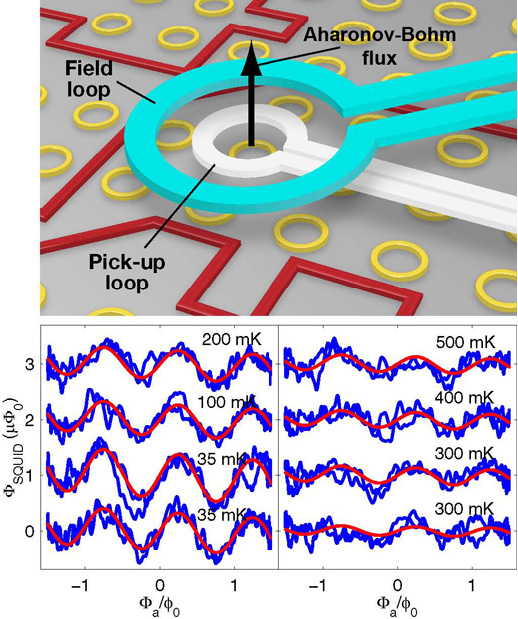Publications
- Fluxoid flucutations in mesoscopic superconducting rings
- Direct imaging of the coexistance of ferromagnetism and superconductivity at the LaAlO3/SrTiO3 interface
- Local measurement of the superfluid density in the pnictide superconductor Ba(Fe1-xCox)2As2 across the superconducting dome
- Spinlike susceptibility of metallic and insulating thin films at low temperature
- Persistent currents in normal metal rings
- A terraced scanning superconducting quantum interference device with submicron pickup loops
- Signal and charge transfer efficiency of few electrons clocked on microscopic superfluid helium channels
 Summary
SummaryMany people are familiar with the Lorentz current induced in normal metals by a time varying magnetic field or the persistent shielding currents generated by superconductors in an applied field. However, a surprising theoretical prediction suggests a persistent current can be supported in a normal metal ring even with finite resistance. Specifically in the presence of a magnetic field if electrons can travel around the ring without losing their phase coherence a current is expected equal to one electron traveling at the Fermi velocity. Measuring these currents using transport techniques is challenging because attaching leads to the ring changes the coherence of the electrons. We used our scanning SQUID to detect the small magnetic moment generated by the currents flowing in these rings. The top image shows a sketch of the two loops of the SQUID sensor centered over a single gold ring. The bottom image shows the periodic persistent current signal as a function of applied magnetic field. (Illustration by Alan Stonebraker) |
| Hendrik Bluhm, Nicholas C. Koshnick, Julie A. Bert, Martin E. Huber, and Kathryn A. Moler, Physical Review Letters 102 136802 (2009). Full Text |
|
Press Coverage |
|
Physics Viewpoint by Yoseph Imry. |
|
Nature Nanotechnology Research Highlights by Adarsh Sandhu. |
|
Physorg by Laura Mgrdichian. |
|
Blog Post by Doug Natelson. |